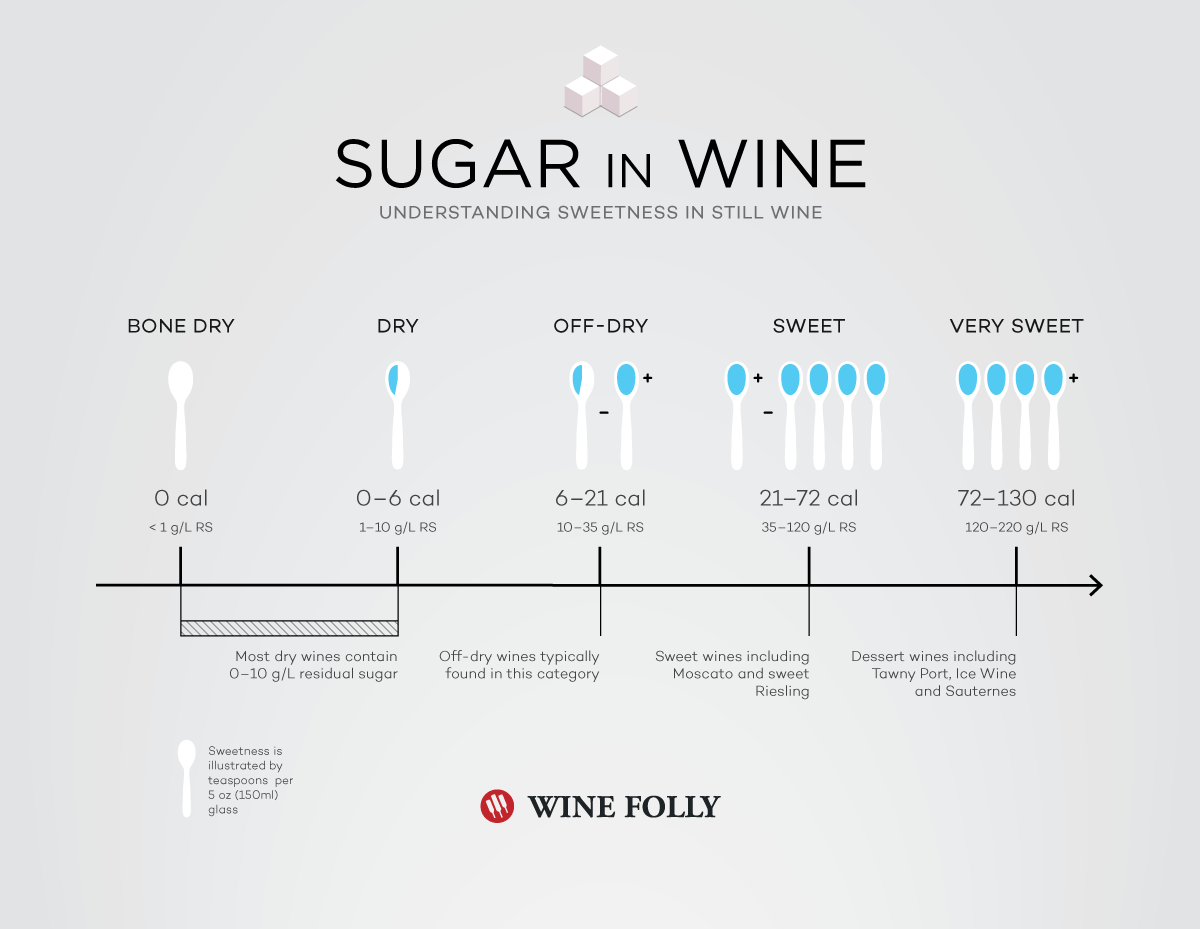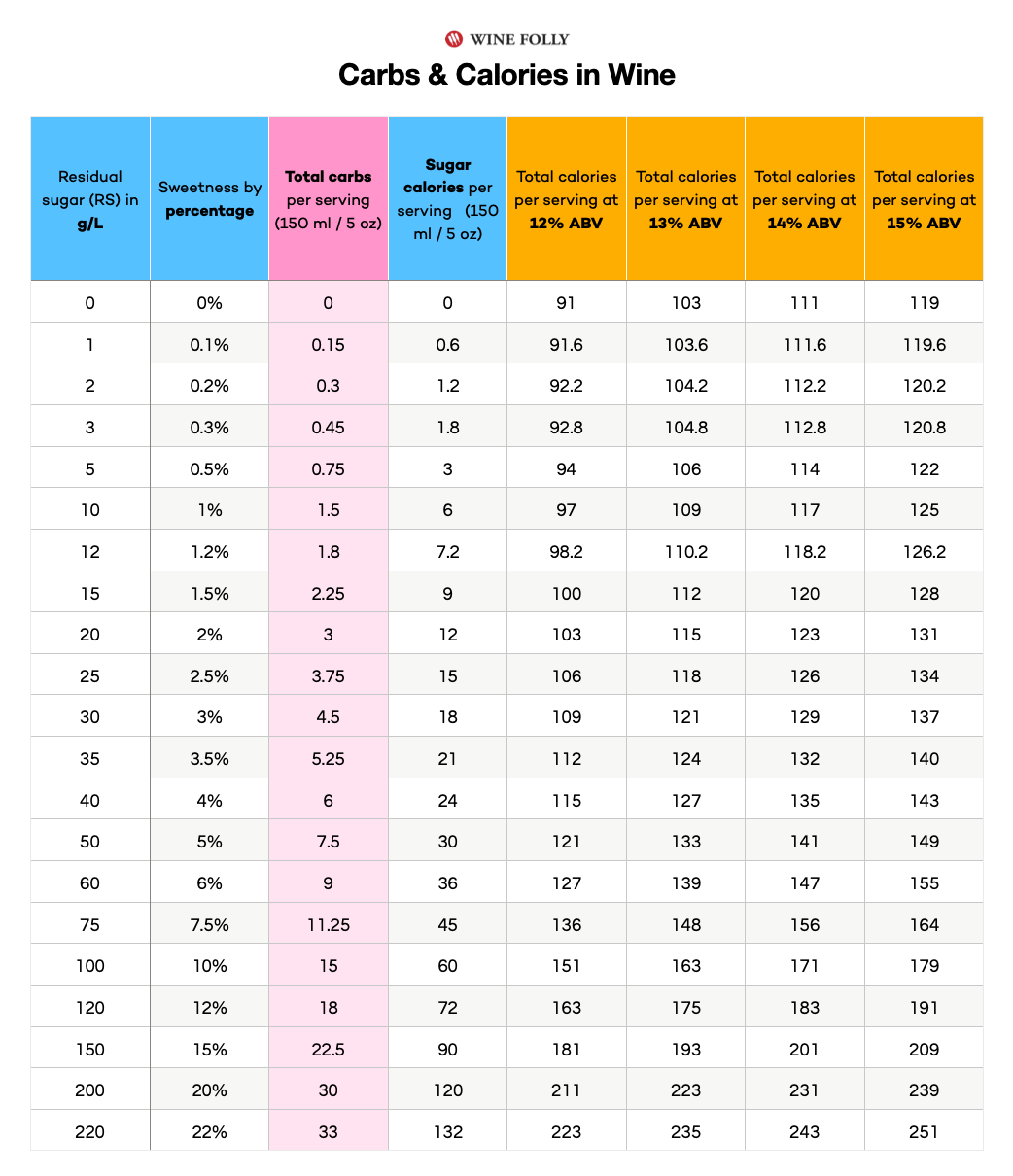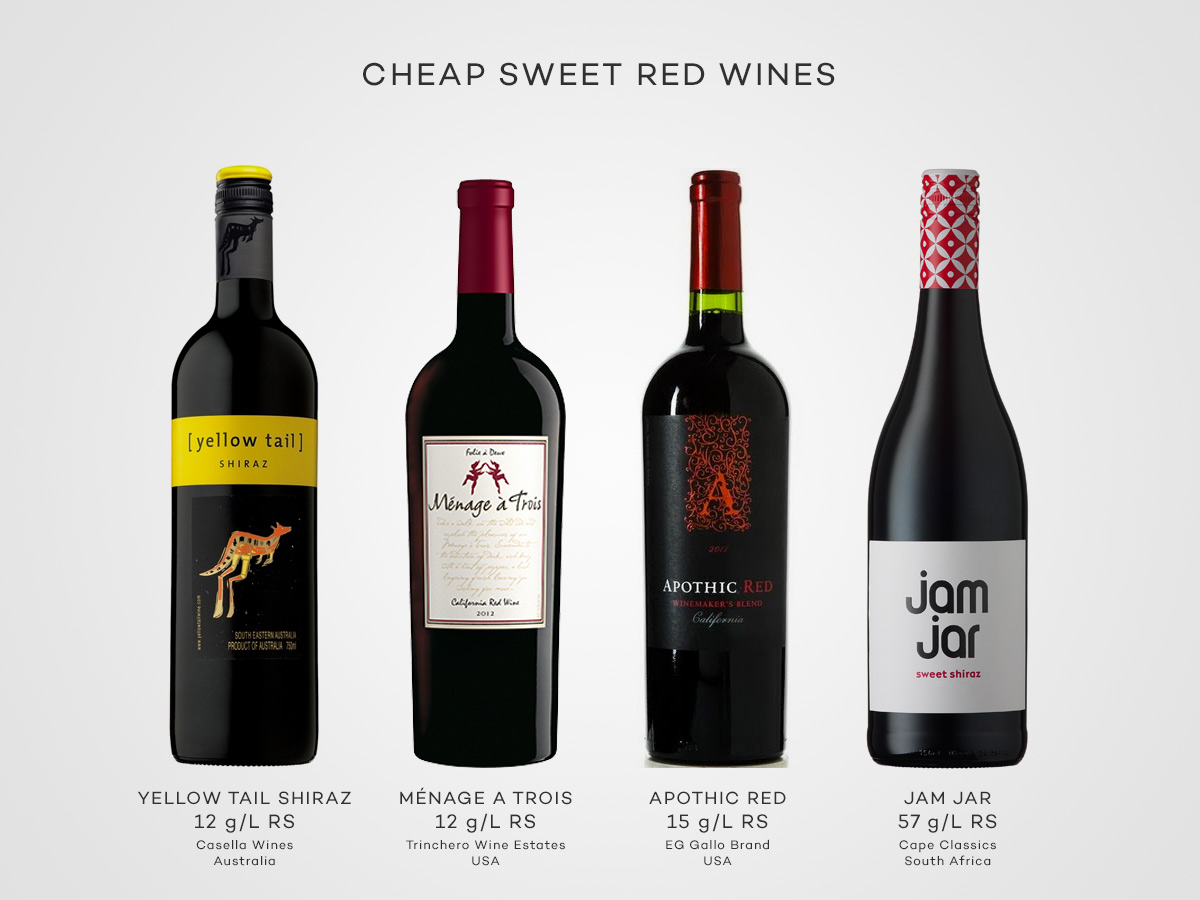There are tons of reasons to ask: Is there sugar in wine? And the answer is yes… and no. Some wines have no sugar, and others have a lot, sometimes twice as much as Coca-Cola! Let’s break it down with some charts to figure out sugar levels in wine.
This article is a follow-up response to Sugar in Wine, The Great Misunderstanding. Many readers asked for a more detailed explanation in terms of calories and tips!
How Much Sugar Is in Wine?

How Did This Pesky Sugar End Up In My Wine?
The sugar in wine is called “Residual Sugar” or RS.
That means the sugar in wine is what remains after grapes have gone through the winemaking process. Grapes contain fruit sugars (fructose and glucose); the residual sugar is what’s left after yeast has chomped on those sugars.
Dry vs. Sweet Wine
During winemaking, the yeast eats up sugar and makes ethanol (alcohol) as a by-product. When the yeast can eat up all the sugar, the result is a dry wine that is higher in alcohol content and low in sugar. When the yeast is stopped by a winemaker (often by rapid chilling), sugar remains, and alcohol is lower.
This is why many sweet wines have less alcohol than dry wines. A great example is German Riesling, which has about 8–9% alcohol by volume (ABV) if it’s sweet and 10–11% ABV when it’s dry.
How To Measure Sugar
The chart above shows sugar measured as grams per liter sugar or (g/L). Residual sugar is usually displayed in one of three ways: in grams/Liter, in grams/100ml, or as a percentage. For example, 10 grams per liter of residual sugar equals 1 percent sweetness.
Wines range from 0 to 220 grams per liter of sugar (g/L), depending on the style. Dry-tasting wines contain up to 10 grams of sugar per bottle.
- Bone-Dry <1 sugar calorie per glass
- Dry 0-6 sugar calories per glass
- Off-Dry 6–21 sugar calories per glass
- Sweet 21–72 sugar calories per glass
- Very Sweet 72–130 sugar calories per glass
The terms above are unofficial but do show common ranges. Currently, most countries (including the US) aren’t required to label actual sweetness levels in wine.

Uncovering The Sugar
Unfortunately, you can’t just taste the wine to know if it’s high in sugar or not because humans are pretty terrible at detecting it with the “naked tongue.” Even highly trained wine tasters often have trouble identifying residual sugar in wine, but you can learn with practice.
Where is sugar listed on a wine bottle? Since wineries aren’t required legally to list sugar levels in wine (as is the case with all alcoholic beverages), they usually don’t.
Fortunately, the good wineries out there make tech sheets available. You can find out important information, including the residual sugar level of each vintage.

Real-World Examples
Several people requested a few real-world examples of red wines containing residual sugar. (The data on these wines was polled in 2015)
- Alta Vista Classic Malbec (2013): 2.8 g/L RS
- Gnarly Head Old Vine Zinfandel: 3.4 g/L RS
- Menage a Trois California Red: 12 g/L RS
- Yellow Tail Shiraz: 12 g/L RS
- Apothic Red: 15 g/L RS
- Jam Jar: A sweet Shiraz at 57 g/L RS
What if I Can’t Find a Tech Sheet?
If you can’t find a technical sheet, or if the residual sugar is not listed, here are a few tips:
- Cheap wine usually has residual sugar. It’s safe to assume that most affordable (sub-$15) wines from the U.S. contain some residual sugar, perhaps anywhere from 2–15 g/L. There are, of course, excellent exceptions to this rule, so look for more information first.
- Drink slightly better wine. If you spend a little more on a bottle of wine, say around $15–25, producers tend to feature less residual sugar (if any). Grapes are of higher quality, so the wines don’t need sweetness to taste fruity.
- Drink slightly less. Even at 15 g/L RS, a wine will only add about 7.5 sugar calories, which isn’t much! Like with all things, moderation is key!
In the end, it comes down to what you like. If sweet, jammy wines are your jam — go for it! But if you’re aiming to eliminate hidden sugars in your day-to-day life, it pays to know what to look for in wine and how to steer clear.